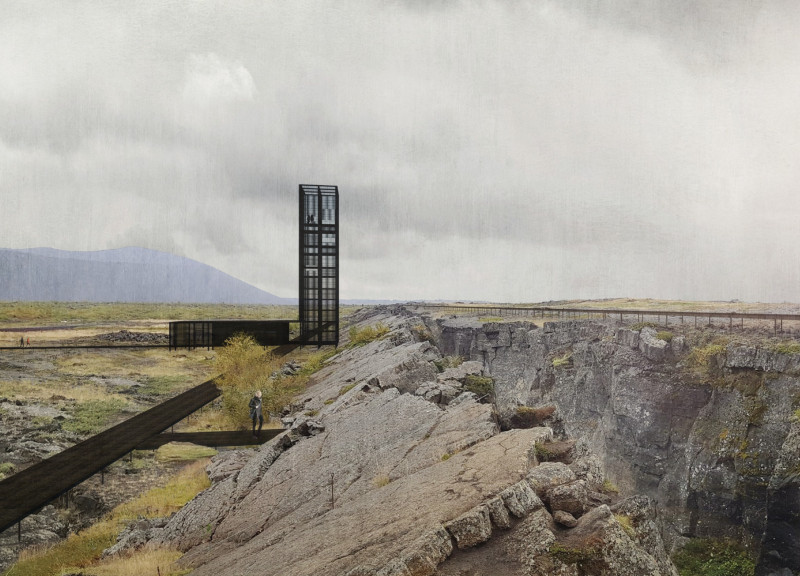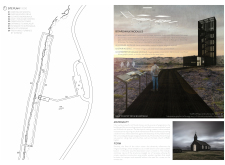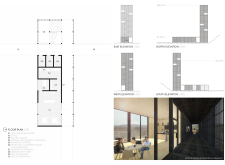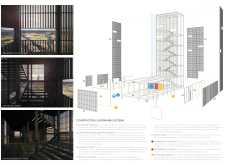5 key facts about this project
The project represents a thoughtful approach to tourism in a sensitive environment, emphasizing sustainable practices alongside aesthetic considerations. The center is not merely a physical structure; it embodies the relationship between human activity and the natural world. It stands as a gateway for visitors, inviting exploration while providing educational opportunities about the local ecology and history.
Functionally, the Grjótagjá Visitor Center serves as an information hub, offering resources about the surrounding area and its natural features. The design includes visitor amenities, such as rest areas and interpretive displays, ensuring that guests can enjoy their time while learning about the significance of this unique site. The integration of an observation tower is particularly noteworthy, as it allows guests to appreciate panoramic views of the Icelandic landscape, reinforcing the center's role as a point of connection between the built environment and the natural world.
The architectural design employs a modular approach to create a functional yet inviting atmosphere. One of the key elements is the boardwalk system, which elevates visitors above the delicate ecosystem below. This design not only enhances the visitor experience by providing an unobstructed view of the terrain but also minimizes environmental disturbance, supporting the idea of responsible tourism.
Materiality plays a crucial role in the overall aesthetics and functionality of the project. The use of Structural Insulated Panels contributes to energy efficiency, while the wood slat screens provide a warm, natural finish that relates well to the local architecture. Steel plates are utilized for durability in signage and other elements, balancing a contemporary feel with traditional Icelandic influences. This combination of materials demonstrates a commitment to sustainability and a conscious attempt to blend the visitor center with its environment.
Unique design approaches include the emphasis on sustainable systems, such as rainwater harvesting and geothermal heating, which reduce the building's ecological footprint. This integration of renewable energy sources exemplifies forward-thinking architectural practices that respond to contemporary environmental challenges. The visitor center's design not only meets functional needs but also inspires visitors to appreciate and engage with the natural landscape, promoting a deeper understanding of sustainability principles.
Each aspect of the Grjótagjá Visitor Center is carefully crafted to create a cohesive architectural experience that resonates with visitors. The dialogue between structure and site is a central component of the design, creating spaces that foster interaction while remaining sensitive to the surrounding environment. This project showcases how architecture can serve as a vehicle for education and conservation, encouraging responsible stewardship of the landscape.
For those interested in exploring the project further, reviewing the architectural plans, sections, and detailed designs will provide deeper insights into the creative processes and innovative ideas that shaped this visitor center. The focus on harmonious integration, sustainable practices, and community engagement underscores its role as an exemplary model for future architectural endeavors amidst sensitive natural settings.


























